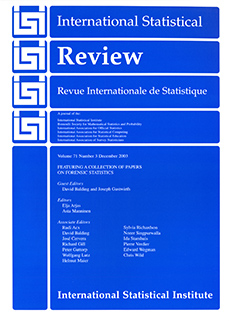Abstract
In this paper we examine how the Lee-Carter model fares with Swedish data for the period 1901-2001 and for segments of this period. We have choosen to censor ages less than age 40 as those ages only are of marginal interest to the forecast. At age 40 some 98 to 99 percent of the birth cohorts are survivors. In the study we only consider the unweighted kt estimates. The Lee-Carter model provides very good fits to the data. When splitting up the base period there seems to be an interaction beween the age and time components of the model. In order to deal with the different phases of falling mortality for males and females possibly one should choose the past 25 years as a base in the model. Selecting the base period is however a judgmental issue depending on the main focus of the forecast. Is it long-term, short-term or, as in Sweden, a combination of both?
Citation
Hans Lundström. Jan Qvist. "Mortality Forecasting and Trend Shifts: an Application of the Lee--Carter Model to Swedish Mortality Data." Internat. Statist. Rev. 72 (1) 37 - 50, April 2004.
Information




